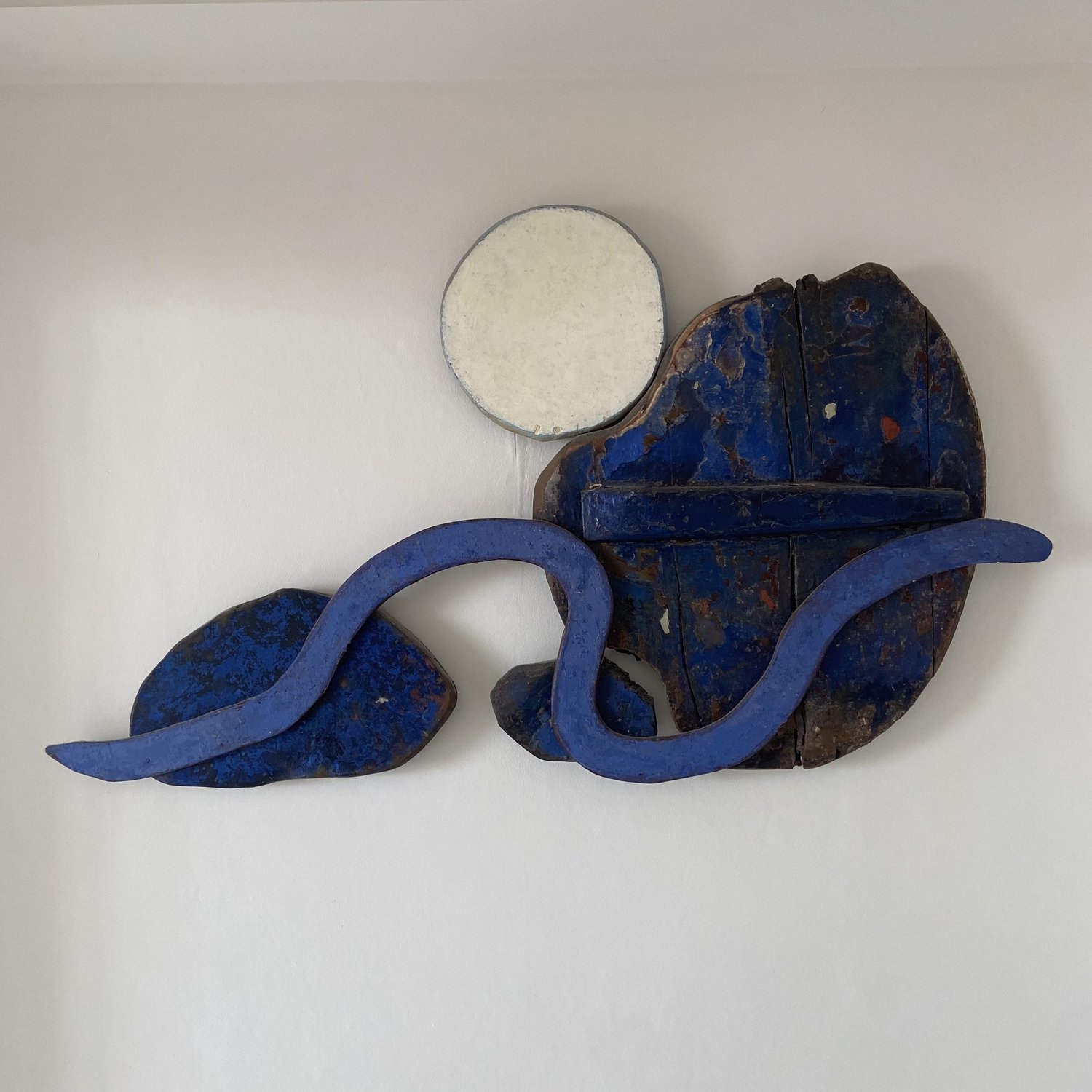
Janet Nathan has extremely distinguished lineage, culturally speaking. Her art comes with great independence of spirit and an intense beauty of its own at the end of a series of separate but cross-linking events in the evolution of sculpture and painting and their fusion together in recent times.
(b. 1938)
Janet Nathan.
Janet Nathan makes beautiful constructions of found materials, driftwood, boat plank and resin, subtly combined and composed into poetic images. Many of them are inspired by her love of rivers and reaches, saltings and lagoons, estuaries and the seas edge, and they always refer in some way to her experience of particular places in the turning conditions of daylight and moonlight, weather and water, time and tide. This is not to say that they are purely topographical, descriptive pictures of specific places. Nathan’s is rather an art of memory and celebration, in which feelings and thoughts find expression in evocative objects that seem to recollect for us things we have known and seen.
Thus on one hand they work through their presence as actual things in real space, resembling objects we have encountered in the world, at the boatyard or the wharf, in a Tuscan chapel or on a river shoreline, things often worn and weathered or perhaps freshened up with a coat of new paint. On the other, they recall moments of intense visual experience, looking upriver towards a dark pier at sunset,or at the cold silver winter light across a lake, or the swell an curve of a hill, or at a sun-faded blue fence by a Mediterranean beach. Nathan’s constructions, that is to say, have about them something of both painting and sculpture, and they delight and intrigue with their enigmatic complications.
Her work is somewhere between painting and sculpture. It is really sculpture, then Nathan is extending the idea of sculpture. Her art is constructed, built up, in an additive and then subtractive process.
What Nathan so elegiacally conjures up is a sense of place, of time of day or evening, night very often, that is also no-place and, finally, beyond any defining constrictions of time or season. Her sense of ‘place’ discloses itself like a dramatic event: a happening, quite abstract but romantically loaded and steeped in the atmosphere and the mood of strong feeling. This is a passionate form of art, made by a strong artist. Nathan’s creation is an exterior world to which she brings an interior sense of almost ritualised intimacy: her remembered place is also an experienced formal and emotional situation. With a spare but rich use of colour, and deliberately restricted means, she is creating a powerful kind of pictorial sculpture, severely reflective, which goes far beyond direct description and yet, mysteriously, avoids any vestige of commemoration or nostalgia, like all the most potent and radical modern art.
